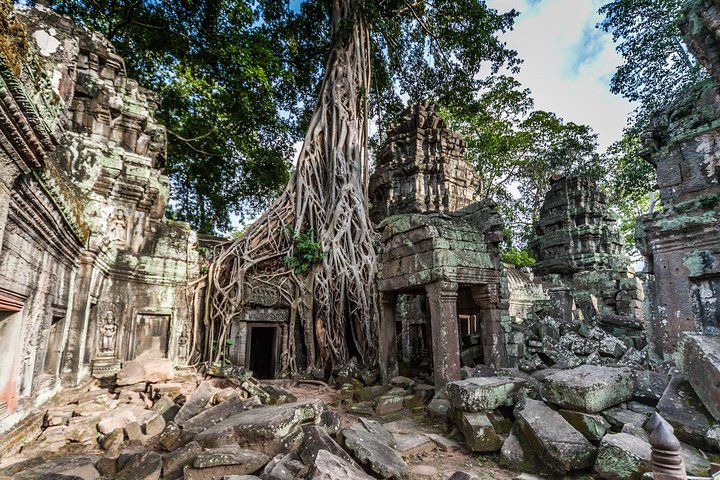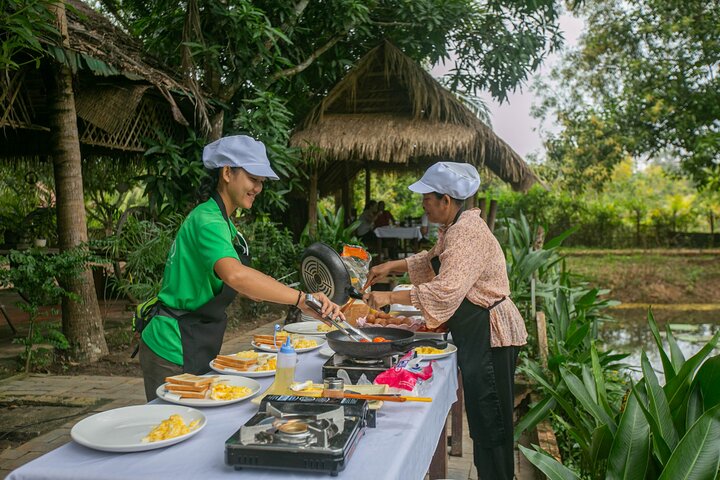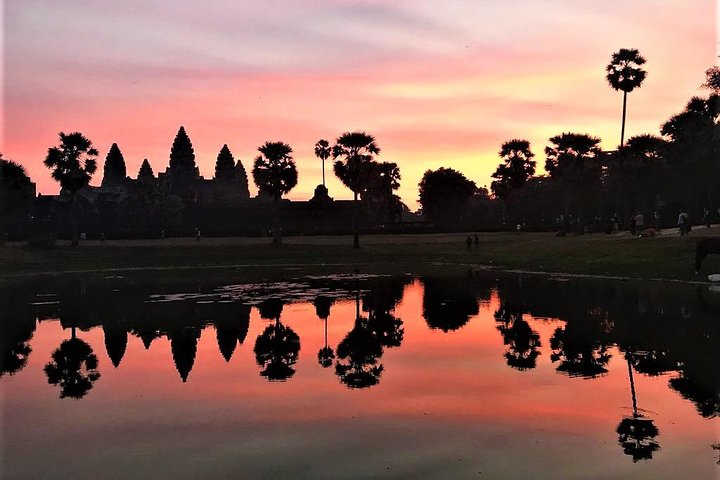Unveiling the Mysteries of Angkor: A Journey Through Time
Drawn by the allure of ancient history, I embarked on a journey to explore the Khmer temples of Angkor. With the guidance of a knowledgeable local, I delved into the mysteries of Angkor Thom, Ta Prohm, and Angkor Wat, uncovering the stories etched in stone and the beauty of a bygone era.
A Journey Through Time: The Enigmatic Angkor Thom
As the sun began its gentle ascent over the horizon, I found myself standing at the South Gate of Angkor Thom, the ancient capital of the Khmer Empire. The air was thick with the scent of history, and the towering statues that lined the causeway seemed to whisper tales of a bygone era. My guide, Mr. Sithon, a man of profound knowledge and a former teacher, was my companion on this journey through time. His passion for the history of his homeland was palpable, and his stories brought the ancient stones to life.
We wandered through the vast walled complex, marveling at the audacity of King Jayavarman VII, who had envisioned this impregnable fortress. The intricate carvings on the bridge depicted the Churning of the Ocean of Milk, a scene from Hindu mythology that seemed to dance in the morning light. As we strolled through the city, I couldn’t help but feel a sense of awe at the sheer scale of it all. The walls, some 6 meters wide and 8 meters high, stretched for miles, enclosing a world that once thrived with life and ambition.
Our exploration led us to the Bayon Temple, where the enigmatic faces of Avalokiteshvara gazed down upon us from every angle. Each of the 54 towers bore the serene visage of the Buddha of Compassion, a testament to the creative genius of the Khmer architects. As I stood in the heart of Angkor Thom, surrounded by these silent sentinels, I felt a profound connection to the past, a reminder of the enduring power of human creativity.
The Mystical Allure of Ta Prohm
Leaving the grandeur of Angkor Thom behind, we ventured into the mystical embrace of Ta Prohm. This temple, dedicated to the mother of Jayavarman VII, was a place where nature and architecture intertwined in a dance of decay and rebirth. The jungle had reclaimed much of the temple, with giant trees growing out of the stone structures, their roots snaking through the ancient walls like the fingers of time itself.
As we navigated the labyrinthine corridors, I half-expected to see Indiana Jones or Lara Croft emerge from the shadows, such was the atmosphere of adventure and mystery. The play of light and shadow created an ethereal ambiance, and I found myself lost in the beauty of the moment. Mr. Sithon, ever the storyteller, regaled me with tales of the temple’s history, his voice a soothing melody that blended with the rustle of leaves and the distant calls of exotic birds.
Ta Prohm was a place of reflection, a reminder of the impermanence of human endeavors and the relentless march of time. Yet, amidst the ruins, there was a sense of hope, a testament to the resilience of nature and the enduring spirit of the Khmer people. As we left the temple, I felt a sense of peace, a quiet understanding that the past and present are forever intertwined.
The Majestic Splendor of Angkor Wat
Our journey culminated at Angkor Wat, the crown jewel of the Khmer Empire and a monument to the grandeur of human ambition. As the afternoon sun bathed the temple in a golden glow, I was struck by the sheer scale and beauty of this architectural masterpiece. Built as a funeral temple for King Suryavarman II, Angkor Wat was a place of reverence and wonder, a testament to the skill and vision of its creators.
Mr. Sithon guided me through the temple’s intricate bas-reliefs, each panel a story etched in stone. The scenes of ancient battles and daily life were a window into a world long past, a reminder of the rich tapestry of history that had unfolded within these walls. As we climbed the steep steps to the upper levels, I felt a sense of exhilaration, a connection to the countless souls who had walked this path before me.
As the sun dipped below the horizon, casting a warm glow over the temple, I stood in silent contemplation, grateful for the opportunity to witness such beauty. Angkor Wat was more than just a historical site; it was a living testament to the enduring spirit of humanity, a reminder that even in the face of time’s relentless march, the echoes of the past continue to resonate in the present.
This journey through the ancient Khmer temples was a reminder of the beauty and complexity of our shared history, a testament to the power of storytelling and the enduring allure of exploration. As I boarded the train back to my European home, I carried with me the memories of a land steeped in mystery and wonder, a place where the past and present danced in harmonious rhythm.






















































